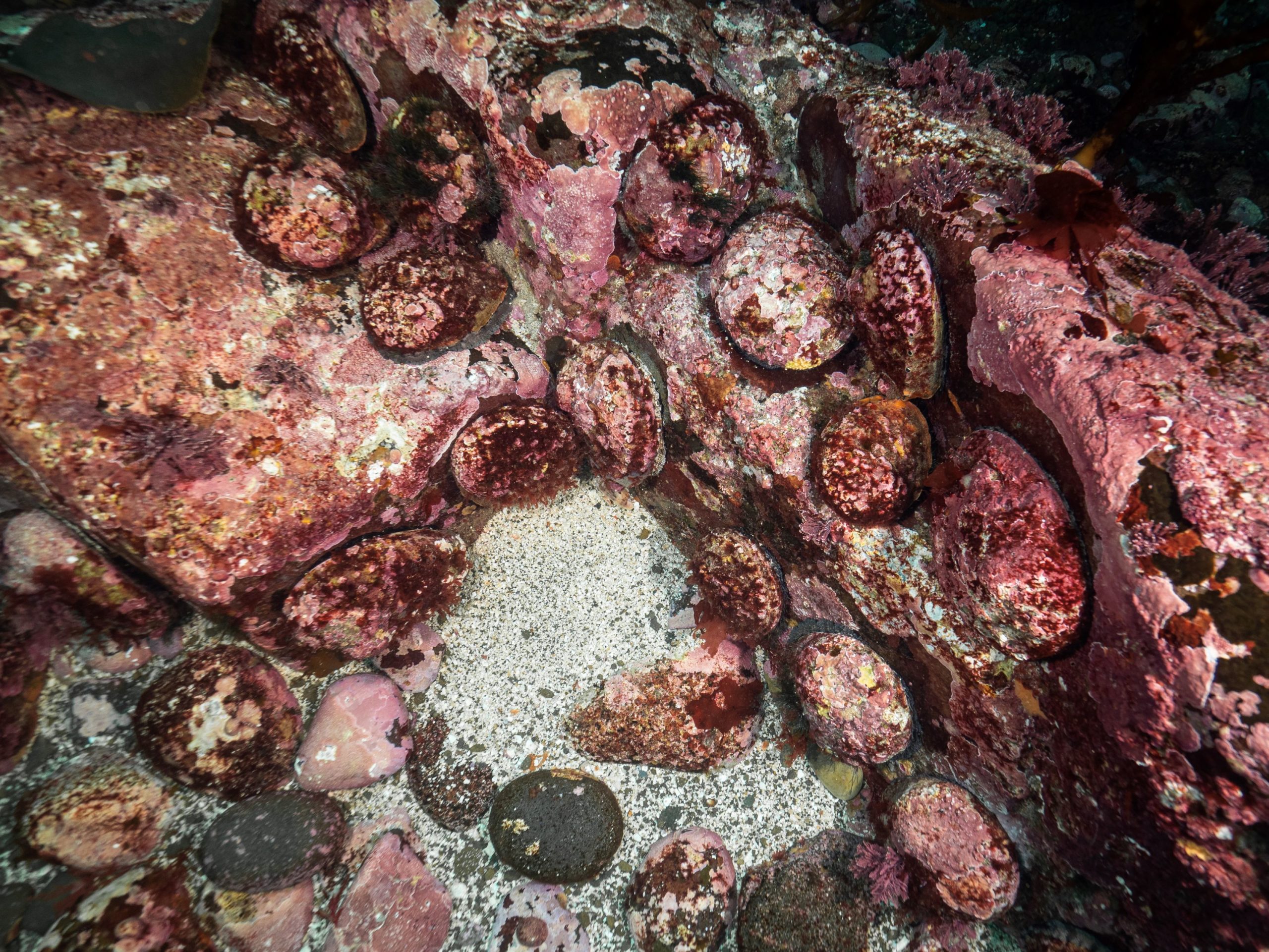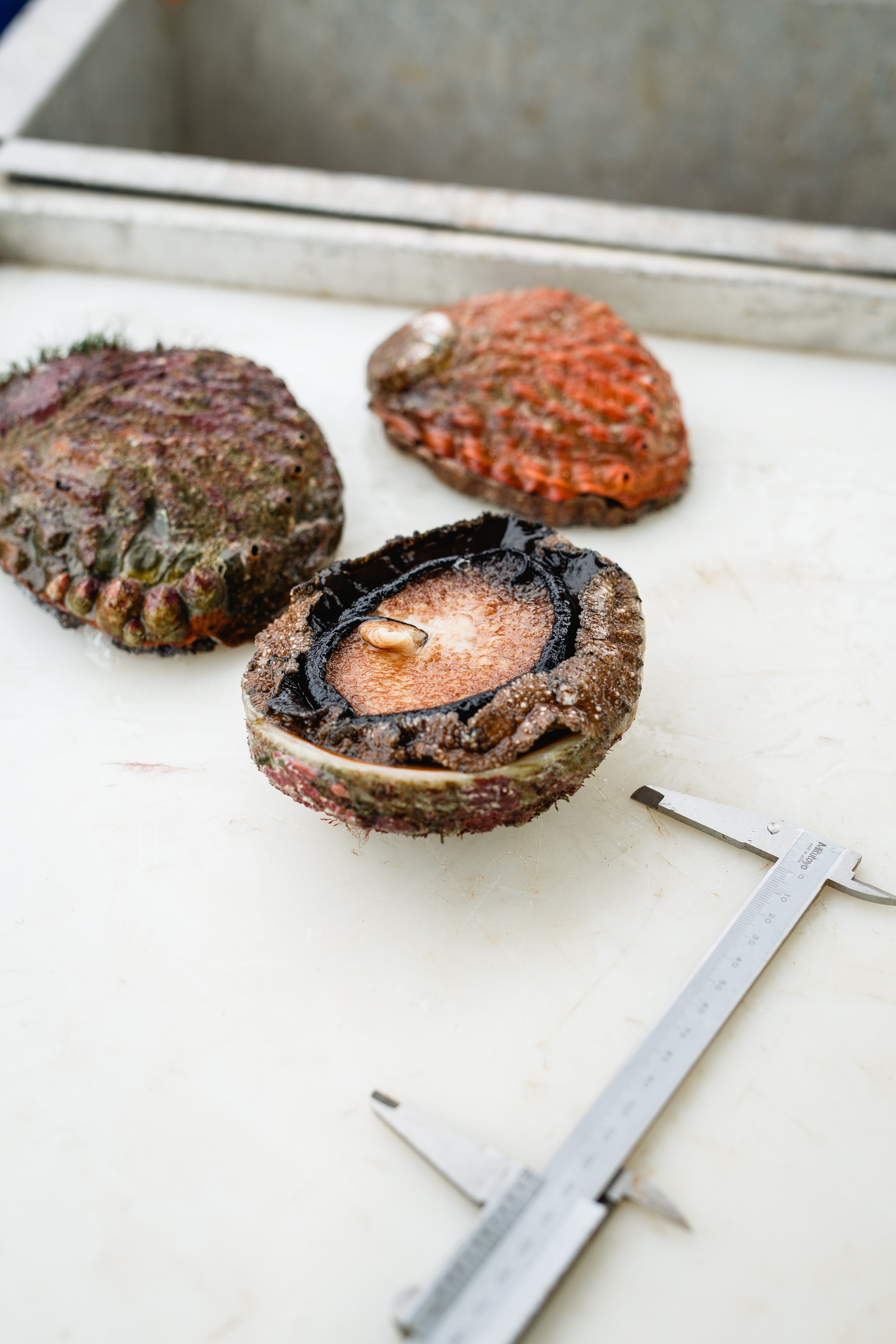Biology
Reproduction and Dispersal
The commercially harvested abalone species in Tasmanian (blacklip abalone and greenlip abalone) are dioecious broadcast spawners (that is, male and female individuals release gametes into surrounding water) with complex reproductive patterns, at least in Tasmania. Gravid animals can be found year round, with little strong evidence of a peak reproductive season. Larvae are lecithotrophic (feed on yolk sacs in the egg) and while considered to be pelagic, the embryos are negatively buoyant for the first 24 hours before. The larval phase of blacklip abalone is relatively short (5 to 15 days ), and dependent on water temperature (McShane, 1992). Manipulative field experiments with blacklip abalone suggested that local recruitment was highly dependent (Prince et al., 1987) on local abundance. Molecular studies were able to confirm that localised recruitment (approximately 100m) in blacklip abalone was a consequence of limited larval dispersal (Temby et al., 2007; Miller et al., 2009). These field and molecular studies are both suggestive of potential for a strong local stock/recruitment relationship, yet this has never been established as a general phenomena. Greenlip abalone in Tasmania generally occur in more simple habitats, with low profile reef and seagrass, and are commonly found on the reef/sand edge in areas with high tidal flows. Molecular studies of connectivity for greenlip abalone (Miller et al., 2014) suggest that connectivity among adjacent populations is also limited, but population structure is two orders of magnitude larger than found for blacklip abalone. Miller et al. (2014) confirmed the distribution and connectivity of this species does conform to a meta-population structure with populations linked over tens of kilometres.

Credit: Matt Testoni
Movement and Diet
Movement of adult blacklip and greenlip abalone is limited and most animals are resident within small sections of reef (10’s of metres) for months or years. Movements of individuals do occur over small spatial and temporal scales, but do not result in emigration from sites. Both species tend to remain on a recognisable home sites or ’scar’, and feed predominantly on drift algae, but may also consume attached kelp (C. Mundy, personal observation). Both Tasmanian abalone species are known to consume algae from red, green and brown groups, though dietary preference and availability have been poorly studied in Tasmania. Guest et al. (2008) used isotope and fatty acid signatures to examine dietary habits of blacklip abalone on both East and West coasts of Tasmania, and found that brown algae formed the major portion of abalone diet, but that bacteria and diatoms are also feature in abalone diets most likely from break down of detritus/drift algae.
Growth and Mortality
Research on individual growth of both blacklip and greenlip abalone has been conducted for more than three decades, yet robust descriptions of growth remain elusive. The two primary methods utilised were ageing by shell rings and growth increments by tag-recapture. Growth rings in the shell spire have been largely discarded as imprecise and the assumption of that growth rings are laid annually has not been well substantiated. Whereas growth increments based on recaptures after 12 month appear to routinely underestimate growth, and, recaptures are typically low and often too low to make meaningful conclusions about growth (Haddon et al., 2008; Helidoniotis and Haddon, 2013, 2012). Within Tasmania there is some evidence that the shape of the growth curve changes with latitude (Haddon et al., 2008), further complicating our understanding of growth and the calculations that depend on an accurate model of abalone growth. Where adequate data sets are available, the inverse logistic growth model (Haddon et al., 2008) appears to be most appropriate for describing abalone growth.
Annual growth increments of pre-reproductive blacklip abalone range between 20mm and 30mm annually (Haddon et al., 2008). A reduction in average annual growth increments coincides with onset of reproductive maturity, which occurs at approximately age five. The onset of emergence from the cryptic phase also coincides with the onset of reproductive maturation, although more variable. Full emergence from crypsis in the majority of Tasmanian blacklip abalone fisheries occurs at a shell length greater than the Legal Minimum Length. This behavioural trait differs from observations in mainland blacklip abalone fisheries, and, limits the usefulness of fishery-independent surveys of pre-recruit abundance.
Maximum size of Blacklip and greenlip abalone in Tasmania exceed 200mm in shell length, and longevity is thought to be in the order of 40 to 50 years. Natural mortality appears to be very low, with few significant predators of the adult phase. Predation on the juvenile phase is unknown, but assumed to be higher than on post-emergent abalone. The longevity of both blacklip and greenlip abalone means that stock are not lost with conservative management decisions.




